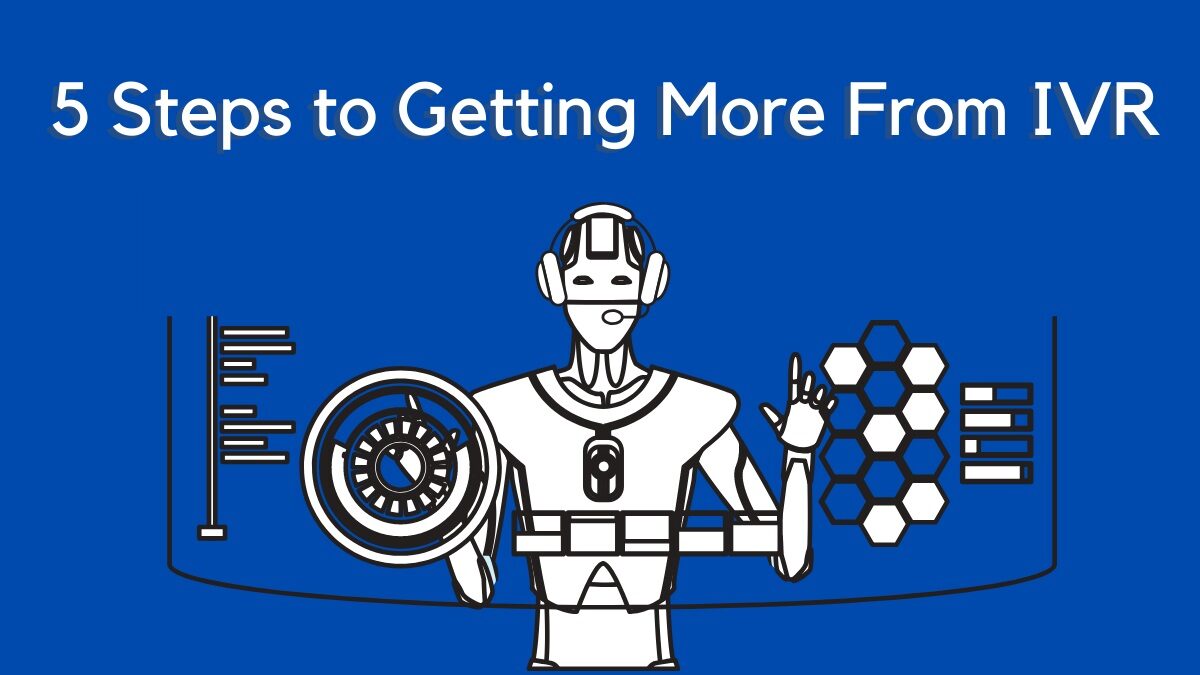Customers generally aren’t crazy about using an IVR system. But if you take a look at the common complaints, the problem isn’t the technology.
It’s the design.
In fact, with a few simple changes, you can make customers far more enthusiastic about your IVR.
(Great news for your bottom line!)
What needs to change in your IVR system
Table of Contents
#1 Keep your menus and pathways short
Customers don’t like to get stuck in an IVR maze.
If you confuse them or give them too many options, plenty of your callers will give up. Don’t make them navigate a lot of menus, and limit the number of options per menu.
As a rule of thumb:
- Set a hard limit of five options per menu (but try and stick to three)
- No more than three menus per call
What if you can’t understand their query within three menus? In that case, your menus aren’t asking the right questions! Or, that customer has a complex query – and they probably need to speak with an agent.
#2 Perform regular IVR testing
You can’t just set up your IVR system once and forget about it. You have to maintain it, and that means regular IVR testing.
There are three kinds of testing to focus on:
- Capacity – can your systems handle high traffic volume?
- Functionality – Does every part of the system work properly?
- User experience – can you improve the experience of going through IVR?
The best way to test your IVR is to call it and use it like a customer would. Look out for cul-de-sacs, roundabouts and pathway duplication – options which are unnecessary or unhelpful.
You can test capacity by simulating high volume over a prolonged period.
#3 Use DTMF *and* VoiceBots
One of the best recent developments in IVR tech is the VoiceBot. This allows users to speak to the IVR instead of using DTMF (press 1 for service, etc.)
Using VoiceBots drastically increases user participation with IVR systems. Users also tend to be more satisfied with Voice-based IVRs because they can skip lists of options that don’t apply to them.
However – customers are still getting used to voice and often need clear instructions about how to use these systems. Be clear and specific.
Use messages like: ‘how can we help today? You can say things like, I want to check my balance, or, there’s a problem with my bill’.
#4 Integrate IVR for multichannel service
From your customers’ perspective, your IVR system isn’t a channel; it’s your business. Your agents are your business too, and so is your social media.
They don’t see any difference, so you can’t either. And that means integrating your channels.
There are a few ways to do that. RPA is a front-end (shallow) approach; APIs offer back-end (deep) integration for contact center services.
Either way, you have two main objectives:
- Bring any data the customer supplies in IVR to other interactions (e.g live agents)
- Use any existing customer data to inform the IVR interaction
If you can do that, you can provide a seamless experience to customers as they move between channels.
#5 Improve your messaging
There are some very common IVR and hold messages which customers just hate.
For example, lots of contact centers invite waiting customers to check their website.
One survey found that this was the single most frustrating message to encounter, partly because most callers have tried that already.
What customers really want to hear is practical information. For example, the two most popular pieces of information for customers were:
- Exactly how long their wait will be
- What their position in the call queue is
Essentially, customers want information that will help them to make an informed decision. Messages like ‘we value your call’ or ‘we’re currently experiencing high call volumes’ do not interest them!
About babelforce
babelforce is a global cloud communications platform focused on No-Code integration and automation. The platform allows non-technical people to build even the most complex of integrated processes for customer-facing teams, particularly in the contact center.

